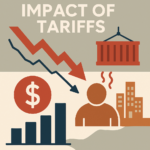An Alternative Investment Fund (AIF) is a type of investment vehicle where people pool their money together, and that money is then invested in assets other than traditional options like stocks, bonds, or fixed deposits.
Think of AIFs to invest in “non-traditional” opportunities — like private companies, real estate, startups, hedge funds, infrastructure projects, or even distressed assets.
Major Characteristics of AIFs
- Limited liquidity: AIFs generally offer less liquidity than traditional investments, making them more difficult to buy or sell quickly.
- Elevated risk levels: Aimed at investors targeting higher returns, AIFs inherently carry greater risks.
- Non-traditional fee models: AIFs often involve higher fees and minimum investment thresholds than mutual funds or ETFs, though they may incur lower transaction costs.
- Challenging asset valuation: The diverse and less standardized nature of underlying assets can make accurate valuation more complex.
- Varied risk-return dynamics: AIFs present unique risk and return profiles, with the potential for superior gains accompanied by increased volatility.
Categories of Alternative Investment Funds (AIFs) as per SEBI regulations:
- Category I AIFs: Focus on socially or economically beneficial sectors like start-ups, SMEs, and infrastructure, and often receive government incentives.
- Category II AIFs: Include private equity and debt funds that invest across various instruments without significant borrowing.
- Category III AIFs: Employ complex strategies, including leverage and hedging, to target short-term returns.
The tenure and listing of AIFs are regulated under SEBI guidelines ensuring clarity and flexibility for investors.
Tenure: Category I AIFs are usually close ended with a minimum tenure of 3 years, extendable by 2 years with investor approval. Category II AIFs are open-ended, offering flexible entry and exit based on liquidity.
Listing: AIFs can be listed on stock exchanges, but it’s not mandatory. Listing may offer an exit route, especially for close-ended funds, though actual liquidity and trading activity can remain limited depending on the fund’s strategy.
Who can invest in AlFs?
Resident Indians, NRIs, and foreign nationals can invest in AIFs, which are suited for investors with higher risk tolerance and the ability to invest larger amounts. As per SEBI guidelines (May 7, 2024), the minimum investment is ₹1 crore, and each AIF scheme can have a maximum of 1,000 investors.
| Fund Name | Launch Date | 6 Month Return | 1 Year Return | Since Inception |
| Swyom Advisors Limited India Alpha Fund | 8th Sep 2023 | -10.71% | 14.08% | 35.14% |
| Prudent Equity ACE Fund | 16th Dec 2022 | -19.09% | -0.93% | 35.01% |
| First Water Trust Capital Fund | August 2020 | -22.34% | -4.57% | 33.44% |
| Abakkus Emerging Opportunities Fund | 6th June 2019 | -15.02% | 1.38% | 30.94% |
| SageOne Flagship Growth 2 Fund | August 2021 | -21.43% | -0.94% | 27.10% |
Top 5 AIFs performance
Alternate Investment Fund Taxation
- Category I and Category II AIFs
- Enjoy a pass-through status means that the income or loss (other than business income) generated by the fund will be taxed at the hands of the investor not by the fund business.
- Investment income is exempt from tax.
- Business income is taxed in the hands of the fund.
- Long term capital gains are taxed at 12.5% and short-term capital gains are taxed at 20%.
- Category III AIFs
- Taxed at the Maximum marginal rate of 42.7%.
Conclusion
Alternative Investment Funds (AIFs) offer high-return, diversified investment opportunities in areas like venture capital and hedge funds, appealing to sophisticated investors. While they provide portfolio diversification and low volatility, they also come with high risks, costs, and limited liquidity. Due to their complexity, thorough research and expert guidance are essential. Despite these challenges, AIFs remain attractive for those seeking exposure to non-traditional asset classes and niche strategies in a dynamic global market.



